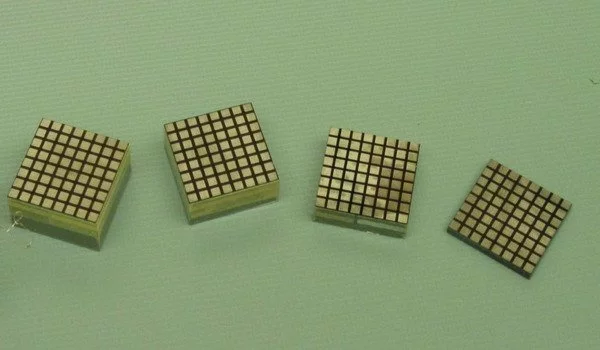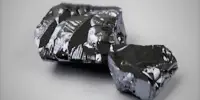Cadmium zinc telluride (CdZnTe or CZT) is a cadmium, zinc, and tellurium compound or, more precisely, an alloy of cadmium telluride and zinc telluride. It is a semiconductor that directly converts x-ray or gamma photons into electrons and holes at room temperature. It is a direct bandgap semiconductor used in a wide range of applications such as semiconductor radiation detectors, photorefractive gratings, electro-optic modulators, solar cells, and terahertz generation and detection. Depending on the composition, the band gap ranges from 1.4 to 2.2 eV.
Radiation detectors made of CZT can operate in direct-conversion (or photoconductive) mode at room temperature, unlike some other materials (particularly germanium), which require cooling. Their relative advantages include higher sensitivity for X-rays and gamma rays due to the high atomic numbers of Cd and Te, as well as better energy resolution than scintillator detectors. In comparison to silicon and germanium detectors, cadmium zinc telluride CZT operates at room temperature and can process more than 100 million photons/second/mm^2.
CZT can be formed into a variety of shapes for various radiation-detecting applications, and a variety of electrode geometries, such as coplanar grids and small pixel detectors, have been developed to provide unipolar (electron-only) operation, improving energy resolution. Furthermore, the spectroscopic resolution of CZT far outperforms that of any commercially available scintillator. CZT is an ideal detector solution for Medical, Industrial, Homeland Security, and Laboratory applications due to its unique combination of spectroscopy and very high count rate capability at room temperature.

CZT detectors are made by depositing very thin metalized electrode geometries on the detector surfaces. These electrodes are then electrically biased, resulting in an electrical potential difference within the detector volume. When ionizing radiation interacts with the CZT crystal, a large number of pairs of electrons and holes are formed in proportion to the incoming radiation’s energy. It is a direct bandgap semiconductor that is used in a wide range of applications such as electro-optic modulators, semiconductor radiation detectors, solar cells, and many others.
It is used to manufacture radiation detectors (X-ray and gamma-ray) that do not require cooling, and that produce excellent resolution by directly converting radiation into an electric signal. A 1 cm3 CZT crystal has a sensitivity range of 30 keV to 3 MeV with a 2.5% FWHM energy resolution at 662 keV. Pixelated CZT with a volume of 6 cm3 can achieve 0.71% FWHM energy resolution at 662 keV and perform Compton imaging.














